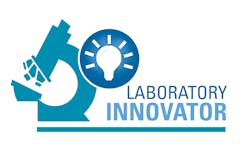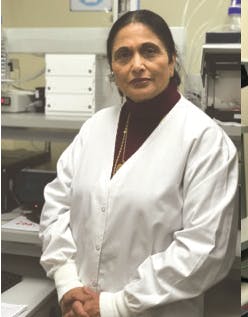Molecular and point-of-care experience helps overcome lab challenges
What made you decide to pursue a career in medicine?
Both my parents were physicians. My father, who is 85 years old, still practices medicine. Both my parents had a passion for patient care. I became an MD because of my parents and because I wanted to challenge myself and to help patients through clinical pathology.
Why did you become a Molecular director for your lab?
Genetic and molecular testing is the future of clinical pathology. Artificial intelligence is catching up fast and is being used to help analyze genetic and molecular testing results. I studied these fields in order to improve patient care. For example, CRISPR is being used in clinical trials to engineer a cure for Sickle Cell Anemia. Pharmacogenetic testing is used to determine how genes affect the body’s response to certain medications.
What do you enjoy most about being the Director of Point of Care?
I am board certified in point-of-care (POC). POC is well regulated by regulatory agencies. One of my greatest passions is being able to help patients and assure that they get a high standard quality of care. POC can also improve patient treatment outcomes because the physician receives results almost immediately and they can institute the treatment necessary to help the patient without any delays.
How does your PhD in Neuroscience help you address and overcome challenges as a Lab Director?
Obtaining a PhD in neuroscience has helped me in many ways with my passion for seeing that patient’s receive a high quality standard-of-care. In the process of obtaining my PhD, I learned to think outside the box. I learned the fundamentals of basic research. I obtained a better view of the whole picture when it comes to taking care of patients. That knowledge enabled me to understand pre-analytic, analytic, and post analytic phases of testing. I was able to promote and develop a laboratory developed test (LDT) in-house that was FDA approved and had clinical utility. The test is an Extraction free SARS-CoV-2 RNA detection by RT-Real Time PCR (polymerase chain reaction). In addition to being the Medical Director of CRH and the Molecular Director for BMC, I was also the Medical Director for a large reference laboratory. The reference laboratory performed 10,000+ COVID-19 tests per day. The development of the LDT, which was approved by CLIA and the local Department of Health, helped overcome shortages of materials.
Will you describe the role your lab has played as a regional healthcare center in New York in response to the pandemic?
We normally have two negative pressure rooms. But New York State allowed us to make six more rooms into temporary negative pressure rooms. There were so many COVID-19 patients in New York City and downstate, that the upstate hospitals were required to accept COVID-19 patient transfers from downstate. We had our fair share of COVID-19 patients. Patients who needed critical care were shipped to other facilities that had ICU beds available. With our two Abbott ID Now’s, we did a great deal of COVID-19 testing and flu testing. For a while, there was an executive order for any patient sent for testing, to be tested for both flu and COVID-19. In the beginning, we were the only facility in the area to offer a rapid COVID-19 test. A lot of patients came to our Emergency Department for testing after they were exposed to people who had COVID-19. I was overseeing, as a solo Molecular Director, for all of the Bassett Network to support the healthcare team and system in the immediate response for the diagnosis and prompt treatment of patients and employees. I was in constant communication with my staff, Bassett Network Medical Directors, and the supply chain vendors to ensure constant feed of supplies to avoid any possible interruption in patient care.
What is the current vacancy rate at your lab? What strategies have you found to be successful in recruiting and/or retaining staff?
We are currently fully staffed in our laboratory. We did not have a staffing problem during the pandemic because, previously, we had to attract and keep workers. We are close to the Capital District area, which includes Albany, New York, so we had to be competitive to obtain staff. We changed to 12- hour shifts. Our hospital employees were treated equally and with respect. I used a team approach and was always positive with the staff. If I had to talk to an employee about something negative, I would always start with something positive and then bring up the negative aspect.
Are there particular ‘lessons learned’ you wish to share with fellow Laboratory Directors?
I learned that a single person or laboratory cannot do everything. During the pandemic, everyone learned that a collaborative approach got things done; this included outside agencies as well as internal personnel. The New York State Department of Health and Governor Cuomo had emergency powers and were able to cut much of the red tape. CLIA also made exceptions with regard to the pandemic. The FDA and CDC also made exceptions with the pandemic. I learned that the collaborative team approach works best in handling emergent situations. This includes the Department of Health, Federal agencies, executives, governors, and other persons.
When did the lab introduce SARS-CoV-2 testing?
The first case of COVID-19 in New York State was confirmed on March 1, 2020. New York state became the epicenter of COVID-19 with 12,274 new cases reported on April 4, 2020 and approximately 20,000 more deaths reported for the month of April, then the same month in 2019. We were able to introduce testing in July 2020. CRH previously had been on a waiting list for the Abbott ID Now for flu testing but with the event of COVID-19, it took longer to get the instruments.
When the COVID-19 pandemic first erupted in New York in 2020, what steps did the clinical laboratory at Cobleskill Regional Hospital take to respond?
The hospital held meetings to develop response plans for the COVID-19 pandemic. A team approach was used. The command center issued daily updates at 3 PM. The New York State Department of Health gave updates daily. The situation changed rapidly sometimes hour to hour. The laboratory staff was kept up-to-date on all changes as they occurred. I informed the staff of what occurred at the daily meetings. The staff received extended training and were encouraged to check the CDC website for information.
Kristine Russell


